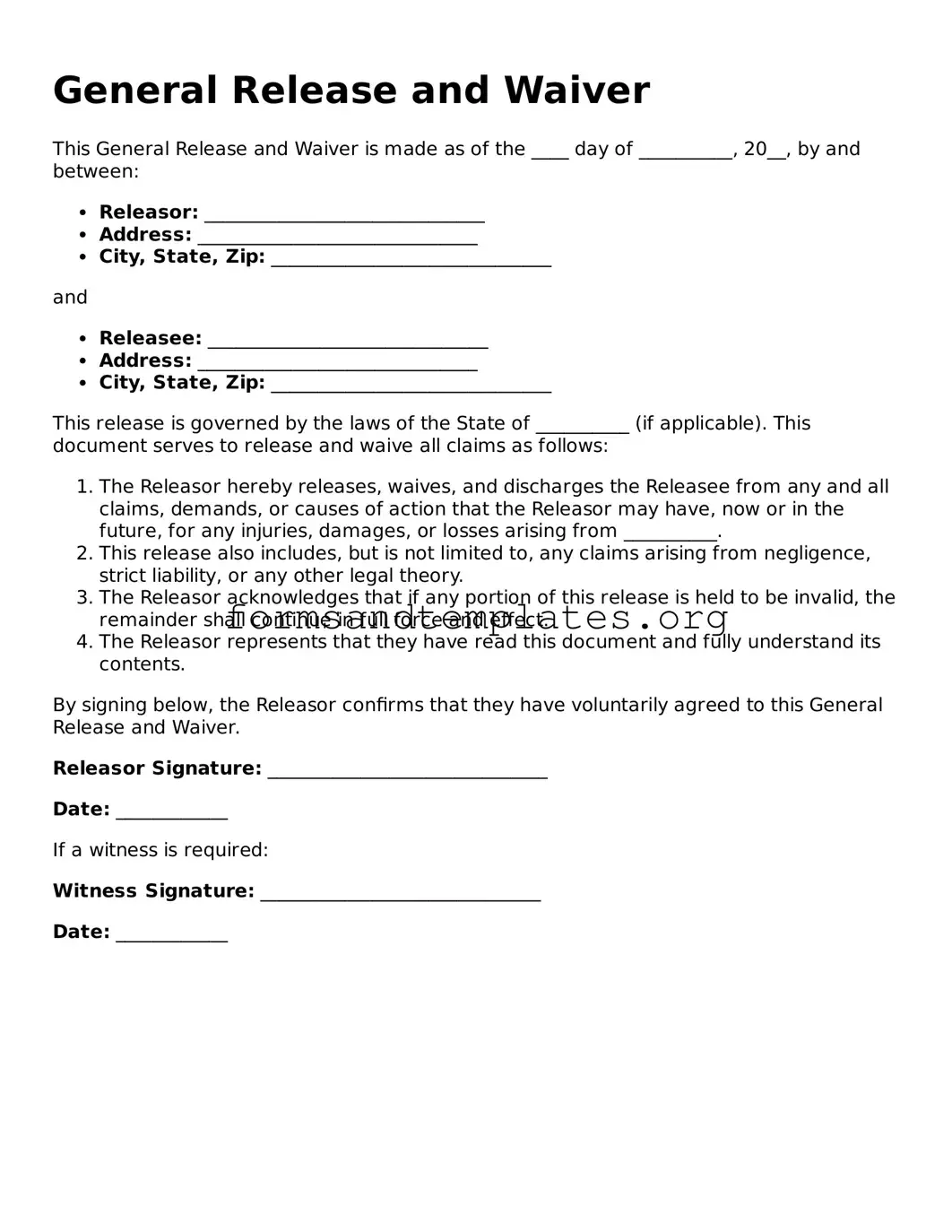General Release and Waiver
This General Release and Waiver is made as of the ____ day of __________, 20__, by and between:
- Releasor: ______________________________
- Address: ______________________________
- City, State, Zip: ______________________________
and
- Releasee: ______________________________
- Address: ______________________________
- City, State, Zip: ______________________________
This release is governed by the laws of the State of __________ (if applicable). This document serves to release and waive all claims as follows:
- The Releasor hereby releases, waives, and discharges the Releasee from any and all claims, demands, or causes of action that the Releasor may have, now or in the future, for any injuries, damages, or losses arising from __________.
- This release also includes, but is not limited to, any claims arising from negligence, strict liability, or any other legal theory.
- The Releasor acknowledges that if any portion of this release is held to be invalid, the remainder shall continue in full force and effect.
- The Releasor represents that they have read this document and fully understand its contents.
By signing below, the Releasor confirms that they have voluntarily agreed to this General Release and Waiver.
Releasor Signature: ______________________________
Date: ____________
If a witness is required:
Witness Signature: ______________________________
Date: ____________
